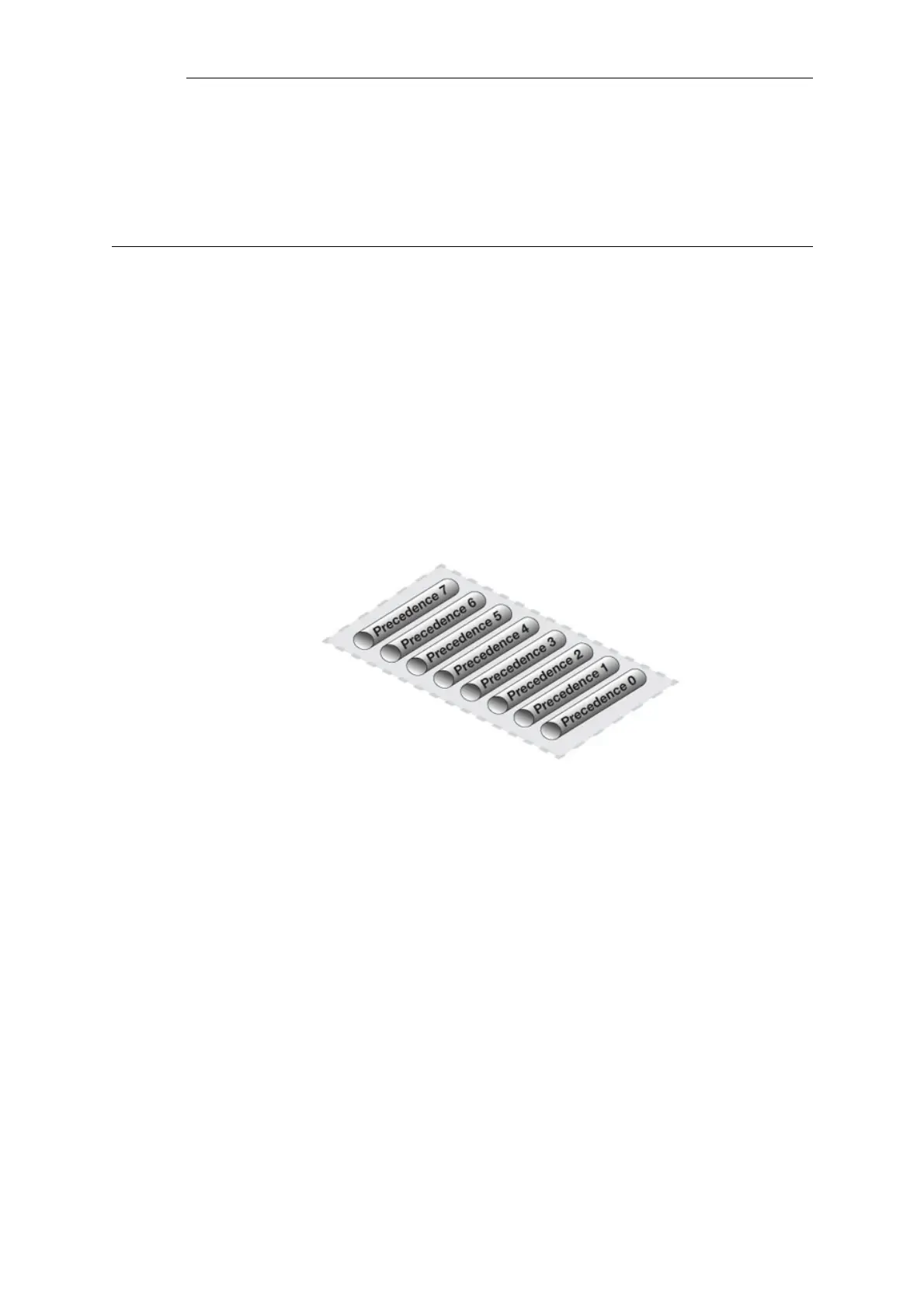and provides a 125 Kbps guarantee for everything else. For web browsing the normal rules of
first-come, first-forwarded will apply when competing for the 125 Kbps bandwidth. This may
mean 125 Kbps, but it may also mean much slower speed if the connection is flooded.
Setting up pipes in this way only puts limits on the maximum values for certain traffic types. It
does not give priorities to different types of competing traffic.
10.1.6. Precedences
The Default Precedence is Zero
All packets that pass through NetDefendOS traffic shaping pipes have a Precedence. In the
examples so far, precedences have not been explicitly set and so all packets have had the same
default precedence which is 0.
There are 8 Possible Precedence Levels
Eight precedences exist which are numbered from 0 to 7. Precedence 0 is the least important
(lowest priority) precedence and 7 is the most important (highest priority) precedence. A
precedence can be viewed as a separate traffic queue; traffic in precedence 2 will be forwarded
before traffic in precedence 0, precedence 4 forwarded before 2.
Figure 10.4. The Eight Pipe Precedences
Precedence Priority is Relative
The priority of a precedence comes from the fact that it is either higher or lower than another
precedence and not from the number itself. For example, if two precedences are used in a traffic
shaping scenario, choosing precedences 4 and 6 instead of 0 and 3 will makes no difference to
the end result.
Allocating Precedence to Traffic
The way precedence is assigned to traffic is specified in the triggering pipe rule and can be done
in one of three ways:
• Use the precedence of the first pipe
Each pipe has a Default Precedence and packets take the default precedence of the first pipe
they pass through.
Chapter 10: Traffic Management
784
